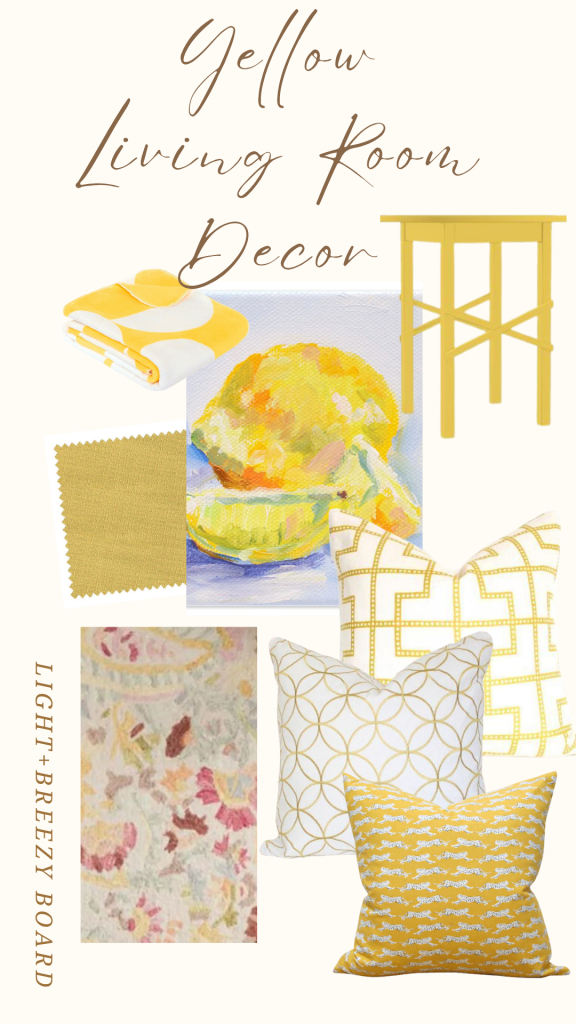Yellow Living Rooms: Embracing Sunshine in Your Space

Yellow Living Rooms: Embracing Sunshine in Your Space
There’s something undeniably magnetic about a yellow living room. It’s as if you’ve managed to bottle sunshine and pour it generously throughout your space. Yellow rooms don’t whisper—they announce themselves with confidence. They’re rooms that make a statement about joy, optimism, and warmth. But working with yellow requires a thoughtful approach and an understanding of its unique characteristics that set it apart from other colors in the designer’s palette.
The Golden Challenge of Yellow Walls
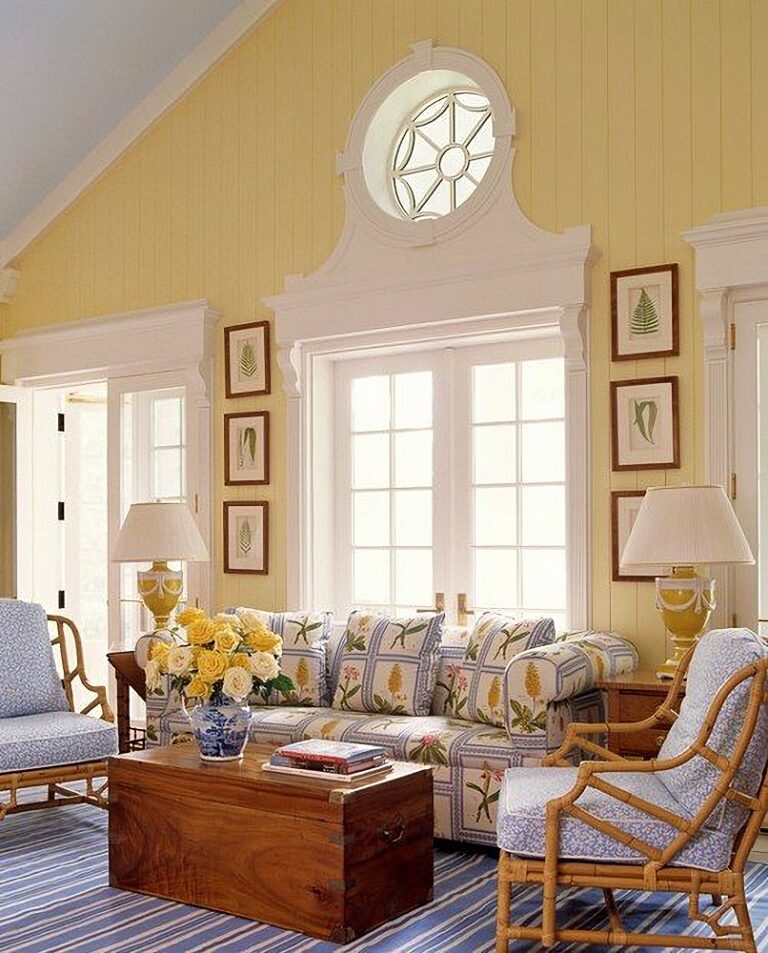
Yellow walls transform a room instantly, but they’re notoriously tricky to get right. Unlike neutrals that recede into the background or blues that remain relatively stable in different lighting, yellow is remarkably responsive to its environment. A butter yellow that feels calming in morning light might become aggressively bright by afternoon.
“Yellow pigments reflect more light than many other colors,” explains color psychology. This means that the yellow you adored on a paint chip will likely appear two to three shades brighter on your walls. The solution? Always select a shade that seems slightly muted or “dirty” compared to your ideal yellow—it will intensify once applied to your walls.
Consider the room’s exposure too. North-facing rooms benefit from warmer yellows with orange undertones that compensate for cooler light, while south-facing rooms might do better with softer, creamier yellows that won’t overwhelm in direct sunlight.
Yellow Upholstery: Commitment to Cheer
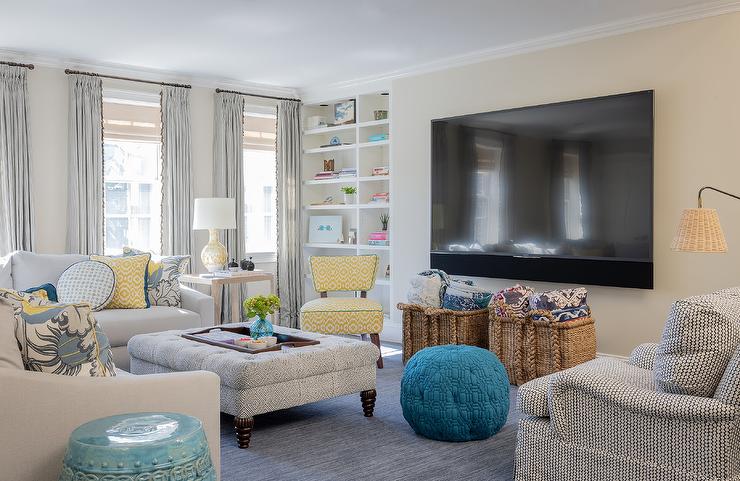
Choosing yellow upholstery is perhaps the boldest yellow statement you can make in a living space. A golden sofa or marigold armchair becomes an instant focal point—a piece around which the entire room’s narrative develops.
What makes yellow upholstery different from other colors is its unmatched ability to anchor visual weight while simultaneously projecting energy. While blue or green sofas provide grounding presence, yellow seating radiates outward, expanding the perceived space.
Texture becomes especially important with yellow upholstery. Linen and cotton weaves temper yellow’s intensity, creating a more sophisticated, nuanced appearance. Velvet, on the other hand, enhances yellow’s depth and richness, making it appear almost luminous as it catches the light from different angles.
Maintenance considerations are real with yellow furniture. Unlike forgiving navy or gray that can hide minor soiling, yellow upholstery reveals every smudge and stain. This vulnerability requires commitment—either through fabric protection treatments or acceptance that your yellow pieces will tell the story of their use over time.
The Unexpected Drama of Yellow Ceilings

While often overlooked, ceilings offer remarkable potential for yellow expression. A yellow ceiling creates an unexpected canopy of warmth that can transform even the most traditional space. It works by reflecting light downward, casting a subtle golden glow across the room below.
Unlike colored walls that register immediately in our peripheral vision, a yellow ceiling works more subtly. It creates an ambient effect that people feel before they consciously notice, making spaces feel simultaneously taller and more intimate.
The ceiling’s distance from eye level also means you can go slightly bolder with your yellow choice here than you might on walls. A mustard or marigold that would overwhelm at eye level can become perfectly balanced when elevated.
For maximum impact, consider continuing the ceiling color slightly down the wall—about 12-18 inches—creating a canopy effect that embraces the space below it. This technique, borrowed from historic interiors, adds architectural interest while enhancing yellow’s natural radiance.
The Finishing Touch: Yellow Accessories
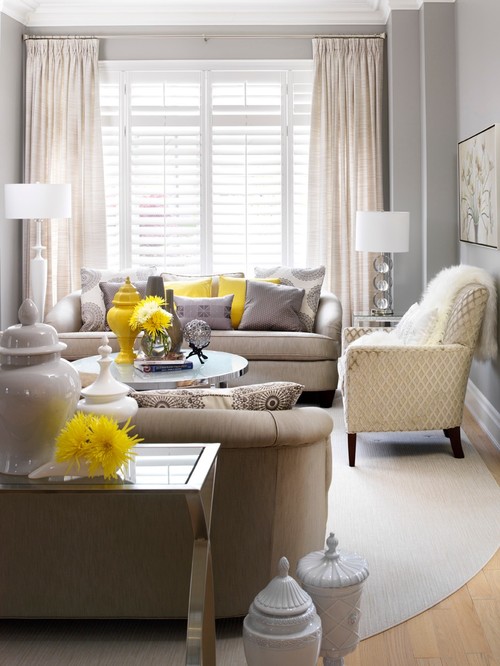
Yellow accessories provide the perfect entry point for those hesitant to commit to larger yellow statements. A cluster of citron pillows, a saffron throw, or amber glass lighting fixtures inject energy without overwhelming a space.
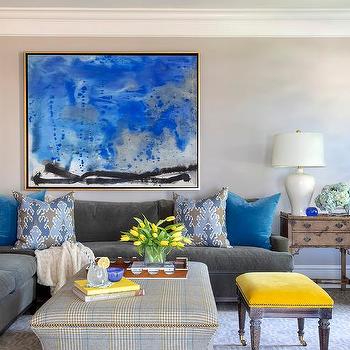
What distinguishes yellow accessories from other colors is their disproportionate visual impact. Even in small doses, yellow draws the eye with unmatched efficiency. This means you’ll need fewer yellow pieces to make a statement than you would with other colors.

In lighting, yellow creates particular magic. Yellow lampshades transform the quality of light they filter, casting a warm glow that flatters both the room and its occupants. Yellow art pieces serve as windows of light on the wall, creating focal points that organize the surrounding space.
When selecting yellow accessories, consider their placement carefully. Yellow elements positioned asymmetrically create dynamic tension that energizes a room. Conversely, symmetrically placed yellow accessories project confidence and intentionality.
Grounding Sunshine: Yellow Rugs
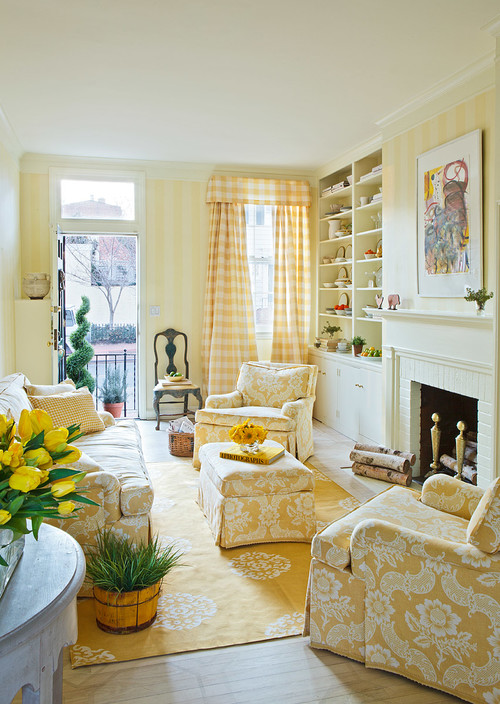
Yellow rugs create a foundation of warmth that radiates upward through a room. Unlike wall color that surrounds or accessories that punctuate, a yellow rug provides a concentrated plane of color that anchors furniture while brightening the entire space.
Yellow’s reflective properties make it uniquely effective as floor covering. It bounces light upward, counteracting shadows and dark corners that plague many living rooms. This reflective quality means yellow rugs read as cleaner and brighter than many other colors, even in identical materials and patterns.
Pattern becomes especially important with yellow floor coverings. While solid yellow rugs can overwhelm, yellow incorporated into patterns—whether geometric, floral, or abstract—provides energy without domination. Consider rugs that incorporate both yellow and complementary colors for a sophisticated foundation that ties your color scheme together.
Harmonious Companions: Colors That Love Yellow
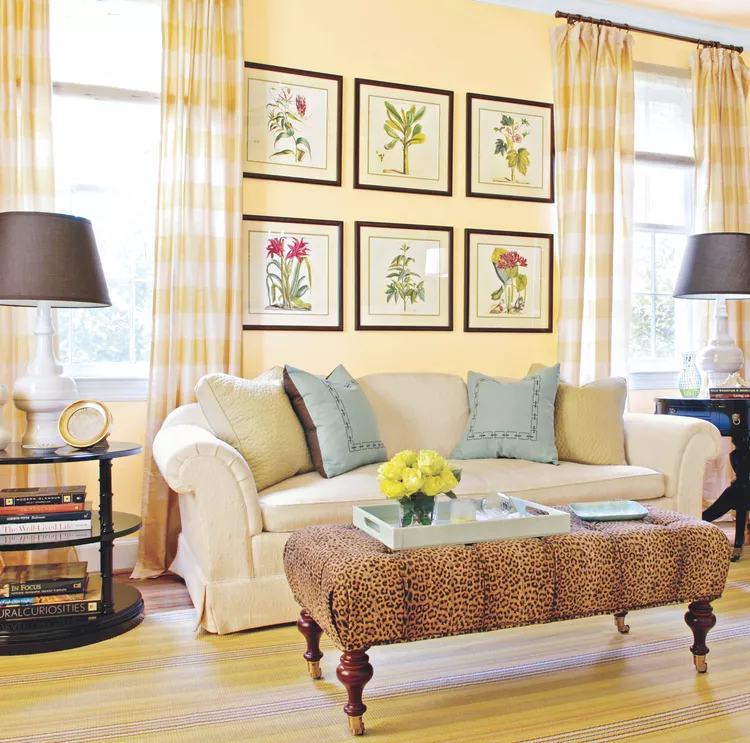
Yellow rarely performs best as a soloist—it shines brightest in thoughtful composition with complementary colors. The colors you pair with yellow determine whether your space reads as sophisticated, playful, traditional, or cutting-edge.

Blue and yellow create perhaps the most classic pairing—navy blue provides grounding contrast that allows yellow to shine without overwhelming. The combination feels both timeless and fresh, particularly when the blue has slight green undertones.
For subtle sophistication, pair yellow with various grays. Warm grays soften yellow’s intensity while cool grays create energetic tension. This partnership allows yellow to become the star without shouting.
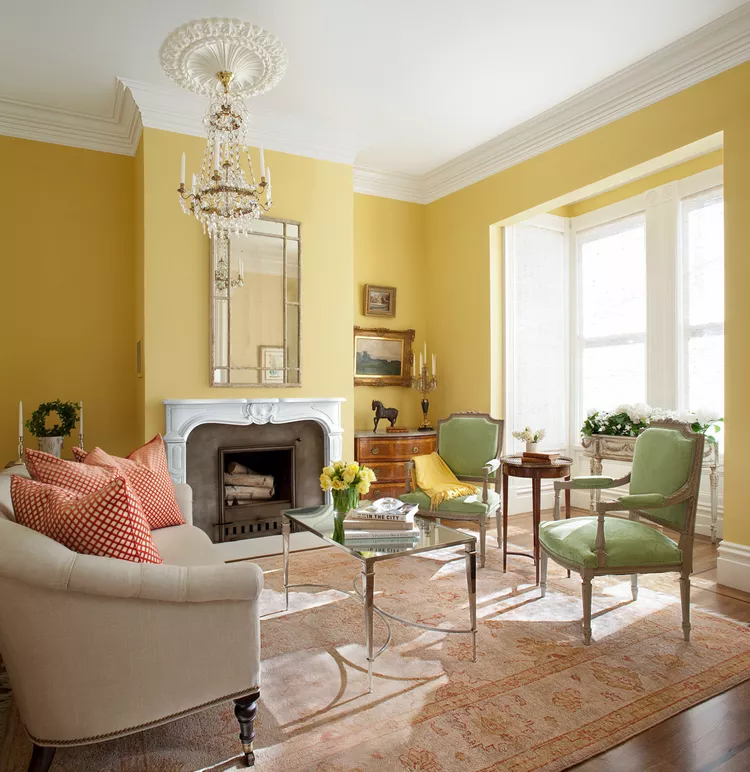
Green and yellow—particularly olive or sage green with mustard or gold yellow—create a nature-inspired harmony that feels simultaneously fresh and grounded. This combination works especially well in spaces that bridge indoor and outdoor environments.
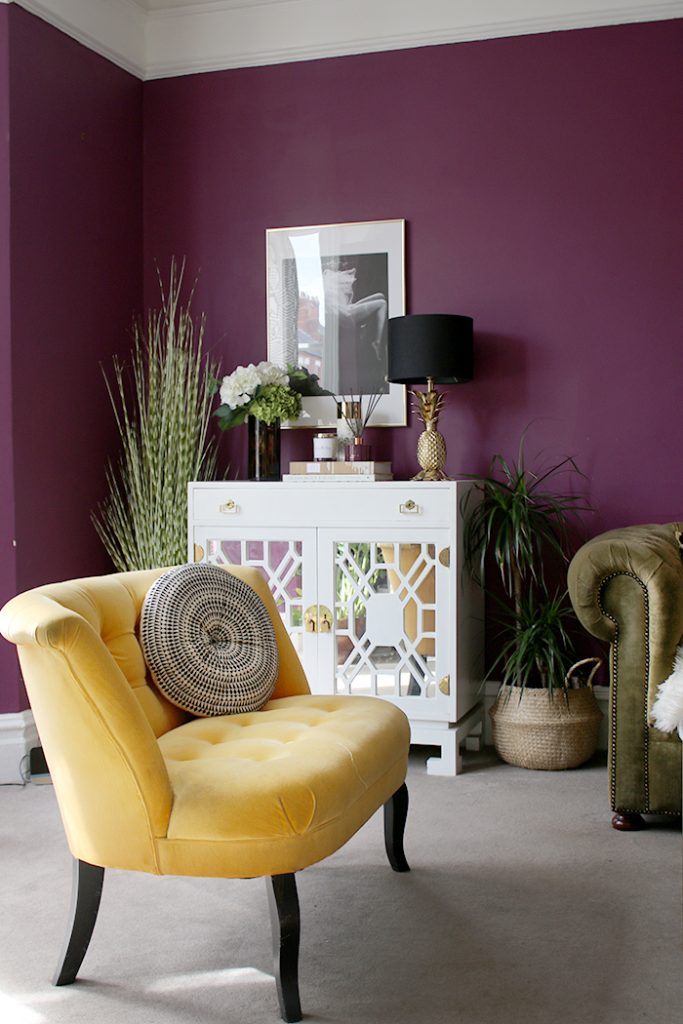
For the most dramatic effect, deep plum or eggplant purple creates rich contrast with yellow. This combination feels luxurious and unexpected, particularly effective in formal living spaces or rooms used primarily in evening hours.
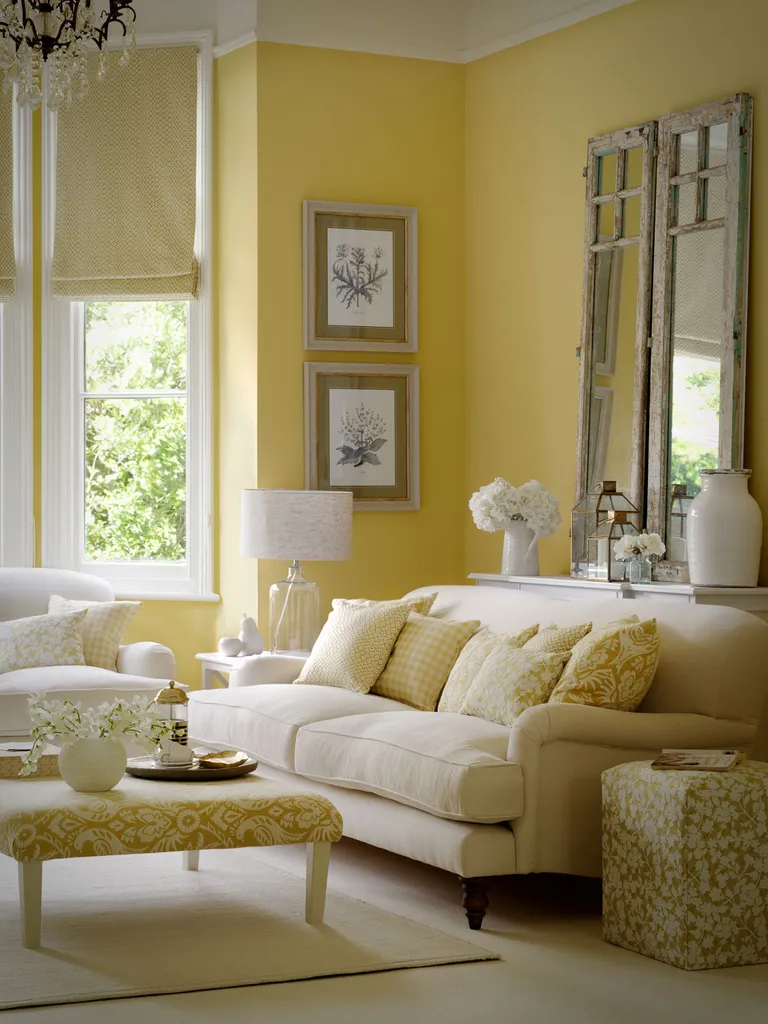
When working with yellow, remember that white is not neutral—it amplifies yellow’s brightness. Instead, consider cream or greige as backdrop colors that support yellow without intensifying it.
Yellow living rooms capture something essential about what home should be—warm, welcoming, and distinctly alive. While yellow presents unique challenges in application, the reward is a space that radiates energy, optimism, and undeniable presence. With thoughtful consideration of tone, placement, and complementary colors, yellow becomes not just a color choice but a declaration of joy made visible in your most treasured spaces.
shopping ideas
